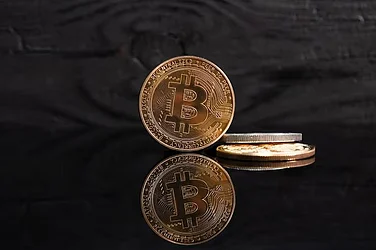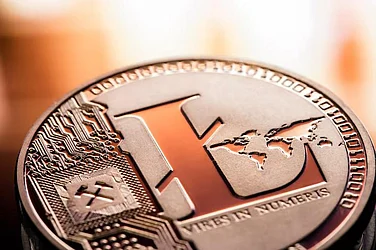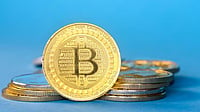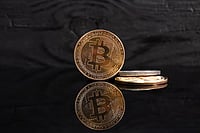In the world of digital assets—especially when exploring any Meme Coin Investing Strategy—many beginners make the mistake of evaluating a coin purely based on its price. They see a coin trading for ₹0.001 and assume it’s “cheap,” or a coin worth ₹500 and assume it’s “expensive.” But in crypto, these assumptions can be deeply misleading. The actual indicator that determines whether a coin is undervalued or overvalued is market capitalization, not price.
Understanding market cap gives investors a realistic view of the asset’s true size, growth potential, and risk level. This becomes even more important when dealing with meme coins, where hype, community sentiment, and speculative activity often influence the price more than fundamentals.
What Is Market Capitalization in Crypto?
Market capitalization—or market cap—is the total value of a cryptocurrency.
Formula:
Market Cap = Price per Coin × Total Circulating Supply
This means two coins priced at the same amount may have completely different market caps depending on how many tokens exist. Likewise, a coin with a low price may actually be "large" in market cap if its supply is enormous.
For anyone exploring a Meme Coin Investing Strategy, this is a crucial concept—because meme coins often have extremely large supplies, which artificially lowers their price.
Why Price Alone Is Misleading
Price is simply the cost of one token. It tells you nothing about the coin’s overall value, supply, or potential room for growth.
Two major reasons price is misleading:
A coin can have a price of ₹0.001 but billions of units in circulation—meaning it may already be a massive project with limited upside.
A coin priced at ₹100 may have a tiny supply and could still be early in growth.
This is why serious investors focus on market cap, not individual token price.
Why Market Cap Matters More Than Price
If you're building a smart Meme Coin Investing Strategy, market cap should be your north star metric. Here’s why.
1. Shows the true size of the project
A coin priced at ₹0.10 but with 1 trillion tokens has a market cap of ₹100 billion. A coin priced at ₹100 but with only 1 million tokens has the same market cap.
Lesson: Price doesn’t equal value.
2. Helps identify realistic growth potential
Smaller market caps have more room to grow.
Example:
A coin with a ₹10 million market cap could realistically 10×.
A coin with a ₹500 billion market cap cannot 10× easily.
This concept is crucial in a Meme Coin Investing Strategy, where investors often chase exponential gains.
3. Prevents falling for “cheap-looking” coins
Just because a meme coin looks cheap doesn't mean it is. Many people get trapped by “unit bias”—believing low-priced tokens are more profitable.
4. More reliable for comparing coins
Market cap helps compare meme coins in a meaningful way—by looking at the total value locked in the asset, not the cosmetic token price.
Market Cap Categories and What They Mean for Investors
Understanding market cap tiers improves your Meme Coin Investing Strategy by helping you identify risk levels clearly.
Large-Cap Coins (Over $10B)
Stable, well-established.
Lower risk, but limited explosive growth.
Mid-Cap Coins ($1B–$10B)
High potential with moderate risk.
Often solid long-term projects.
Small-Cap Coins ($100M–$1B)
High upside potential, higher volatility.
Many meme coins fall here.
Micro-Cap Coins (Under $100M)
Extremely risky.
Can provide huge gains or huge losses.
Most meme coins start in micro-cap territory—this is where using market cap instead of price becomes extremely important.
How Market Cap Supports a Smarter Meme Coin Investing Strategy
A strong Meme Coin Investing Strategy should rely on understanding:
Community growth
Liquidity
Tokenomics
Market cap behavior
Hype cycles
Common Mistakes Beginners Make
Here are typical errors seen when developing a Meme Coin Investing Strategy:
Focusing on token price instead of market cap
Assuming low price = big upside
Ignoring token supply
Buying coins too late (after market cap peak)
Not checking fully diluted valuation (FDV)
Overlooking whale concentration
Avoiding these mistakes can significantly improve your investment outcomes.
Conclusion
If you're creating a solid Meme Coin Investing Strategy, one of the first lessons is this: price doesn’t matter—market cap does. A token priced at ₹0.001 can be more expensive than one priced at ₹200 once you consider total supply and market valuation. Market cap helps you judge real value, identify realistic upside, and avoid falling for hype-driven traps.
FAQs
1. Why shouldn’t I focus only on token price?
Because price doesn’t show total value. Market cap does. A low-priced token can still have a huge market cap and limited growth potential.
2. How does market cap help with a Meme Coin Investing Strategy?
It helps assess if the coin has room to grow, avoids overvalued traps, and allows more accurate comparisons between coins.
3. Can a meme coin with low price still be overvalued?
Yes. If it has trillions of tokens, the market cap may already be too high.
4. Is a lower market cap better for potential gains?
Generally yes—lower market caps have more upside, but also higher risk.
5. What other factors should I check besides market cap?
Liquidity
Community activity
Utility (if any)
Token supply and burn mechanisms
Developer transparency
Whale holdings




















